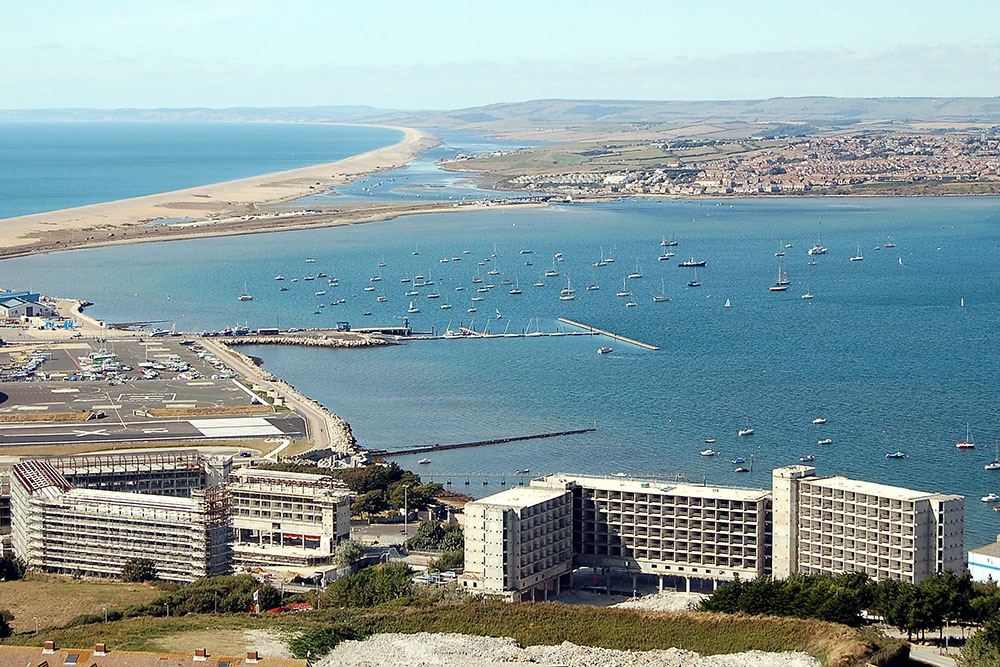Portland Harbour
Portland Harbour, located on the southern coast of England, was constructed in the mid-19th century as a strategic naval base. Its creation was driven by concerns over French naval power, prompting the British government to commission the building of protective breakwaters. Construction began in 1849 and was completed in 1872, using convict labor from HM Prison Portland. At the time, it became the largest man-made harbour in the world.
The harbour was heavily fortified with installations such as the Verne Citadel, East Weare Battery, and the Breakwater Fort, all designed to defend against potential attacks. Portland Harbour played a vital role in both World Wars, serving as a base for naval operations and anti-submarine warfare research. During World War II, it was a key embarkation point for Allied forces during the D-Day landings and suffered significant bombing raids. One notable act of bravery was by Jack Mantle, who was posthumously awarded the Victoria Cross for his actions during an air raid.
After the war, the harbour continued to serve as a training base for the Royal Navy, particularly for anti-submarine warfare and seamanship. However, in 1995, the naval base was closed, leading to economic challenges for the local community. The site was sold to Langham Industries in 1996 and repurposed as a commercial port. Today, Portland Harbour is a hub for maritime activities including sailing, diving, and cruise ship visits. It also hosted the sailing events for the 2012 London Olympics, marking its transition from a military stronghold to a center of sport and tourism.
Do you have more information about this location? Inform us!
Source
- Text: TracesofWar
- Photos: Steinsky
- LETT, B.G., The Small Scale Raiding Force, Pen & Sword Military, 2013.
Nearby
Museum
Point of interest
Monument
- War Memorial Portland - Fortuneswell
- Korean War Memorial Nothe Fort - Weymouth
- Memorial Major John Francis Fisher - Weymouth
Cemetery
- Commonwealth War Graves Portland Royal Naval Cemetery - Portland
- British War Grave Portland Royal Naval Cemetery - Portland
- Commonwealth War Graves Strangers Burial Ground - Portland









